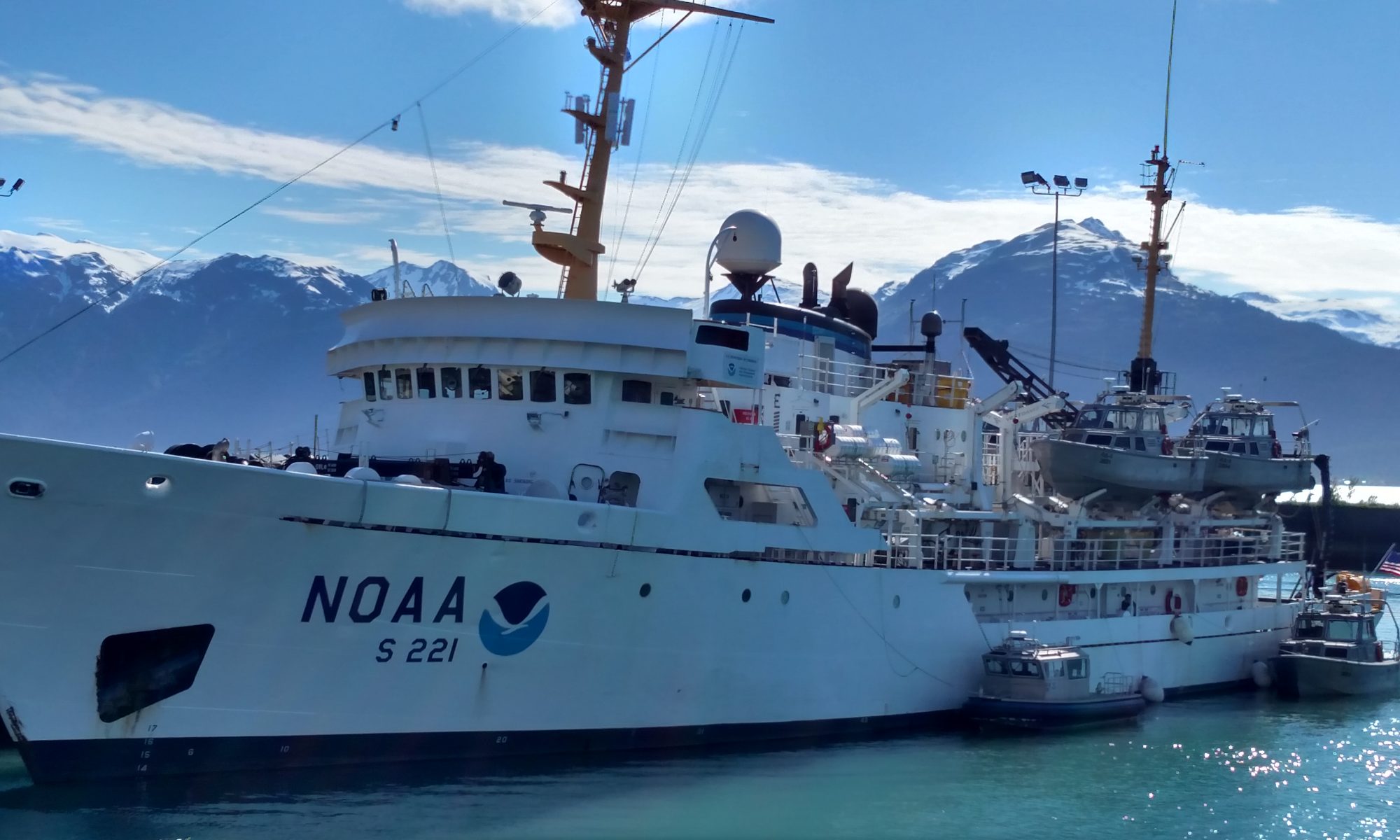NOAA Teacher at Sea
Patricia Greene
Onboard NOAA Ship Hi’ialakai
June 26 – July 30, 2006
Mission: Ecosystem Survey
Geographical Area: Central Pacific Ocean, Hawaii
Date: July 17, 2006

Science and Technology Log
The first creatures we experienced at Kure Atoll were the spinner dolphins. These creatures delight in playing in the wake of our bow; doing somersaults, spins, and jumps; crisscrossing fearlessly in front of our boat, then losing interest when we slow down. Scientists are not sure what make spinner dolphins exhibit this type of behavior. Interestingly, scientists have observed that spinners in the Northwestern Hawaiian Islands have a different social structure than those around the main Hawaiian Islands. In the Northwestern Hawaiian Islands, dolphins demonstrate group cohesion and typically stay together in the same group socializing in the lagoons or when they feed offshore. In the main islands a spinner dolphin may join a different feeding group every night; scientists have dubbed this behavior “fission-fusion,” since groups form and split repeatedly.We observed mothers with calves at their side; the babies easily keeping up and enjoying the sport as much as the adults. During the day the dolphins are relatively inactive and take group naps but at night they leave the atoll to forage and feed.

We observed a large group of spinner dolphins at Kure; approximately 70, although they swam so rapidly they were difficult to count. Other pods or groups have been identified at Pearl and Hermes and Midway. Typically, crossover between these groups in the Northwestern Hawaiian Islands is rare. Recently we visited Southeast Island at Pearl and Hermes and interviewed NOAA Fisheries monk seal researchers; Hugh Finn, Jessie Lopez, and Kennedy Renland regarding their spinner dolphin research. Basically, the dolphin research is done at the same time as they do the atoll counts for the monk seals; approximately every third day if the weather cooperates. If winds exceed 15 knots, safety becomes a concern and researchers will not go out in the small boats. During an atoll count day the researchers leave camp at 9:00 am and return at approximately 4:00 pm. For safety reasons, only two researchers go out in the boat at a time; one person remains on shore and monitors the radio in case assistance is needed. During an atoll count they will visit North Island, Seal Kittery, Grass Island, and various sand spits to assess the population.

Dolphins at Pearl and Hermes Atoll usually travel in groups or pods of 50 to 60. Mothers with calves are often seen at this time of year. Researchers explained that the age of the calf can often be estimated by the existence of “fetal folds.” The female dolphin has a 12-month gestation period and while inside the mother the calf develops creases in its body. These “fetal folds” will exist until the calf is two or three months of age.Dolphin surveys involve taking digital photographs of as many dolphins as possible. This year the Pearl and Hermes Atoll researchers have taken approximately 2,000 photographs to date. These digital images will be forwarded to Dr. Lezek Karczmarski at Texas A&M and fed into a database for his research. Individual dolphins usually have distinctive cuts, scars or marks that help identify them. Researchers also take small biopsy samples from the dolphins. This is accomplished by using a crossbow type instrument with a dart that removes a tiny piece tissue from the skin.
During a dolphin survey, researchers record the start and end times, initial and final GPS coordinates, swell, water depth, water temperature and bottom type. They assess the numbers and ages of any calves observed and record the numbers of juveniles and adults. Total number of digital images taken and any ID ratio is also recorded. The Northwestern Hawaiian Islands spinner dolphin pods have a habitat relatively free from typical human interference. Threats to dolphins in more populated areas include collisions with vessels, entanglement in fishing nets and other marine debris, and acoustic disturbances. In the Northwestern Hawaiian Islands few of these threats exist. Spinner dolphins are protected under the Marine Mammal Protection Act. Exact population numbers worldwide are unknown.Spinner dolphins have a wide range; found in tropical waters, subtropical, the Pacific, Atlantic and Indian Oceans. They feed on mesopelagic fish, squid, and shrimp. The females reach sexual maturity at 7 to 10 years, and give birth to a single calf every other year. Calves are weaned at seven months. Spinner dolphins may have a life span exceeding 20 years.
Special thanks to the Hawaiian Islands National Wildlife Refuge, United States Fish and Wildlife Service, Department of Interior for access to Southeast Island and an opportunity to spend a day with the NOAA Fisheries biologists to learn more about the spinner dolphin research they conduct during their field season.

